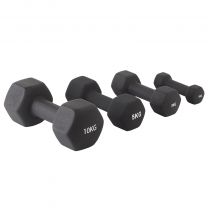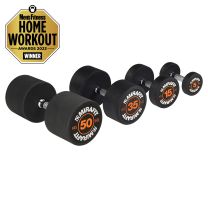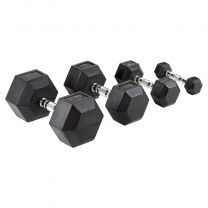A day in the life of an Olympian
A day in the life of an Olympian

Medal hopeful and freestyle medley swimmer Max Litchfield, 24, is set to become a Team GB Olympic star at Tokyo 2020. But how does he spend a typical day?
We recently caught up with Max to learn more about his gruelling training regime. He outlined his busiest day of the week (normally a Monday) and gave us some insight into what it would be like to live like an Olympian.
A Day in the life of an Olympic Swimmer
06:20 -Wake Up
06:30 - Breakfast
A man of habit, Max eats a bowl of Fruit & Fibre most mornings. Although he has been known to alter this on occasion as it’s not always as easy to stick to the same foods – especially when travelling.
“If I am away and in a village environment, I would make sure to search around in the days before I race to find the best alternative,” he says.
“For instance, recently in South Korea, I ended up having two small bowls of cereal; one oats and one bran flakes along with a medium banana. Sometimes you have got to make do with what you are provided.”
07:15-07:45 - Pre pool
Olympic swimming training doesn't just happen in the pool. "Half an hour prior to all my swim sessions I go through a land warm-up routine which includes everything from release, mobility and activation exercises alongside any of my prehab exercises I use daily for my hip."
Max has to work hard on his rehabilitation exercises due to a hip injury he sustained in Spring 2018 which caused him to miss the Commonwealth Games.
07:45-10:00 - Morning Swim Session
The first swim session of the day would have a large aerobic component.
"This is usually a mixture of all four strokes (butterfly, backstroke, breaststroke and freestyle) at a moderate intensity with some drills and skills mixed in, to allow a warm-up from the weekend and prep for the week."
Some sessions are a little more intense than others though. On occasion, he'll swim between 6000-8000m. To put this in context, this is the equivalent of Max swimming just short of the height of Mount Everest during an average session.
10:05 - Post Swim Snack
Typically a Nakd bar.
10:15-11.45 - Gym Session
Max works out three times a week, with each session lasting for an hour and a half.
In the gym, Max will perform a wide range of strengthening exercises, focusing on how he can improve his performance in the pool.
This will include some challenging exercises such as Dumbbells pistol squats and Weight Sled work.
11:50 - Refuel
After his gym session, Max needs to refuel quickly so has a whey protein shake.
12:15 - Lunch/Brunch
Normally, lunch for Max will see him eating three slices of brown toast, three scrambled eggs and half an avocado. This meal is just shy of 500 calories.
12:30-14:30 - Nap
After a tough morning session, Max needs to get some well-earned rest. "This area of the day would usually be spent napping, especially in a hard training block" he says.
"If not napping I will be doing work/emails or chilling and recovering ready for the evening session."
14:30 - Pre Training Meal
Max usually opts for porridge with semi-skimmed milk, a spoonful of honey, a spoonful of peanut butter, chia seeds and dried fruit.
15:15 - Jump Testing
Swimming coaches use this type of training to enhance athletes' explosive power to decrease their time on the blocks.
"Every Monday we will monitor our jump scores. This involves three counter-movement jumps where we measure certain parameters to monitor progress across the season," Max says.

15:30-16:00 - Pre pool
Same as above.
16:00-18:00 - Evening Swim Session
The evening session tends to focus on threshold type training, aiming to increase and improve anaerobic capacity through hypoxic training.
Hypoxic training is all about getting your body to adapt to a reduced level of oxygen. And for swimmers, this helps them take more strokes without breathing.
“When we do hypoxic sessions, I often feel I could be on the brink of passing out,” says Max.
Definitely not one to try at your local pool! But it’s something some Olympic swimmers work on with their coaches to help them stay underwater.
18:00-18:15 - Post pool
Time to wind down for the day.
"Most sessions in the evening I will do some sort of post pool involving loosening off and stretching out the areas that feel particularly tight."
19:00 - Dinner
A typical dinner for Max will see him consuming around 1,200 calories.
This is made up of chicken fajitas in wholemeal wraps with half an avocado, onion, peppers, lettuce and the all-important chilli jam.

19:30-21:00 - Chill
It's not all training and fueling, Olympic athletes do get some downtime.
"I will spend most of my evenings just chilling out watching TV and taking some time to reflect on the day and looking ahead to the rest of the week."
21:00-22:00 - Bed
As bedtime routines go, Max's is not as strict as you might think.
"I will always try to head to bed between similar times every night to get in a good rhythm with my body clock and would normally sit somewhere between 9 and 10 pm," he says.
We’d like to say a huge thank you to Max for taking time out of his training schedule to speak with us. You can follow him on Instagram: @litchfield.max and don’t forget to wish him good luck for the Tokyo 2020 qualifiers!
Max Litchfield images credit: Laurent Lairys/Agence Locevaphotos/Alamy
For more content, follow us on Instagram, YouTube, TikTok, and on our official Mirafit Facebook page.
Enter your email to signup to our newsletter
Tags: Misc > Lifestyle









